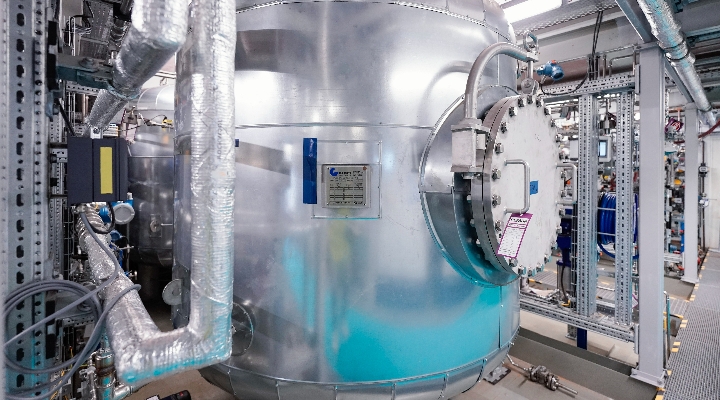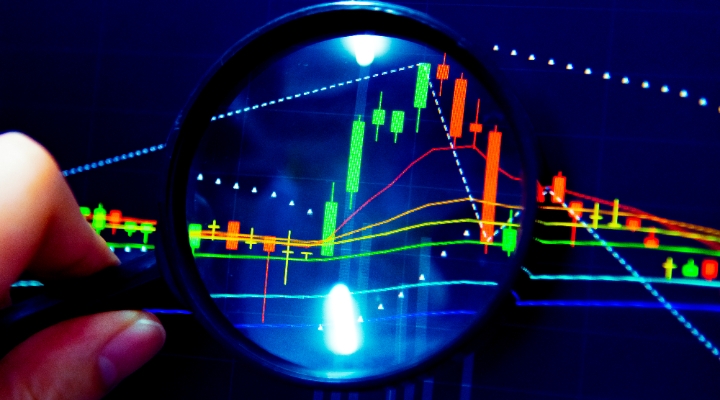
You might think companies extracting lithium from mines or salt lakes are currently reaping substantial profits. After all, lithium is a central component in cars and batteries. The energy transition needs it.
Moreover, the supply of raw lithium is limited – much more so than anticipated demand. The reality is somewhat more muted. Lithium miners are in a poor position, not just in terms of share prices, but in terms of real-world profits.
Take Albemarle. The North Carolina-headquartered company is the world’s largest lithium supplier. Its stock price has plummeted from approximately $237 (£189.90) in late July to a humble $127 now.
The situation at the world's second-largest lithium miner, Chile’s Sociedad Quimica y Minera (SQM), is equally bleak. About a year ago, the company was trading on the New York Stock Exchange at almost $100 per share. It’s now halved to around $51. Why?
For one, lithium producers are seriously affected by low lithium prices. In December 2022, lithium was still trading at $75,000 per tonne, but that’s now dropped to $23,000 due to declining demand and destocking. Change will take time. Morningstar stock analyst Seth Goldstein, who follows lithium miners and Tesla, expects prices to stabilise towards the end of 2023 and start to rise in 2024.
Digging For Disappointment
On the stock markets, the prices of major lithium producers have continued their decline after Q3 earnings this month. For instance, the price SQM on average received from buyers for the precious metal in the last quarter was 47% lower than in the same quarter last year. For SQM, at least, this led to a whopping 53% plunge in EBITDA on the same period last year
At Albemarle, EBITDA was even 62% lower than in Q3 2022. The company is now forced to reduce its EBITDA outlook for 2023: it no longer assumes a range of $3.8 billion to 4.4 billion, but rather that of $3.2 billion to 3.4 billion. Goldstein expects $3.2 billio. Its EBITDA in 2022 $3.5 billion.
Albemarle expects to produce and sell 30% more lithium this year than last. But if the price per tonne it receives remains as low as it is now or falls even further, that is not good news. Albemarle itself thinks prices will rise by 15%, but that is a questionable assumption. If its new inventory comes to market faster than demand increases, it will hit profitability.
What probably didn't help in maintaining Albemarle's stock price was its cancellation, last month, of its acquisition of Australian lithium miner Liontown. Albemarle was prepared to put $4.2 billion on the table and analysts responded enthusiastically to the announcement. Liontown, among other things, operates the Kathleen Valley mine, which is expected to yield lithium as early as next year.
Lithium Companies: A Value Investing Take
On this issue at least, Goldstein doesn't share the gloomy outlook many investors maintain. He says investors are too focused on the short term, which is only a small part of the overall story. The question is not “when will we get our money?”, it’s “how rapidly demand will increase?”
Morningstar now expects lithium demand to increase by 20% per year. Production should increase from approximately 800,000 tonnes last year to 2.5 million tonnes in 2030, according to Goldstein, who also anticipates lithium prices will have stabilised by the end of this year. Next year they should then rise again. In addition, he expects lithium prices will exceed $12,000 per tonne until 2030. He projects a long term average price of around $30,000 per ton.
Will Albermarle Win?
Albemarle is poised to benefit from this trend, Goldstein argues, given that its production costs are lower than those of other lithium producers. This advantage stems from the exploitation rights Albemarle holds for the Salar de Atacama, an immense salt lake in Chile, where lithium is extracted by evaporating brine. Situated in one of the driest areas on earth with minimal rainfall, the region boasts the highest lithium concentration in the world.
This is a long-term view, too. He has long held a positive view of Albemarle, partly due to its robust financial health. Net debt and gross profit ratios (before interest, tax, and depreciation) are healthy, indicating it can meet its financial obligations while continuing to pay dividends.
Albemarle's financial strength remains intact despite its substantial planned investments aimed at increasing production at existing locations too. It can largely fund these through its earnings, requiring minimal external borrowing. Moreover, the company could utilise its cash reserves for new acquisitions; investment bankers foresee a wave of mergers and acquisitions in the next years.
SQM: Nationalisation Plan
SQM, like Albemarle, benefits from exploiting salt lakes. Extracting lithium from brine is much quicker and leads to better profitability, compared to mining lithium, which is an expensive operation.
However, SQM's license for Salar de Atacama expires much earlier than Albemarle's – in 2030. This poses a risk because of a Chilean government plan, announced last spring, to gradually nationalise lithium extraction. Goldstein thinks the likelihood of the government succeeding is as high as the possibility of it not happening, given the Chilean Congress’s conservative leanings.
In addition, SQM is not solely reliant on income from Chile; it is, for example also involved in lithium extraction from an Australian mine through a joint venture with Wesfarmers. The costs of this project is relatively low, but higher than at Salar de Atacama.
Two Lithium Giants Undervalued
Finally, a glance at the stock valuations. Both stocks are undervalued on the stock market, but Albemarle more so than SQM. On November 17, the closing price for SQM was $50.66, compared to a fair value of $95. For Albemarle, these figures are $127.39 versus $300.
And the extra good news for Albemarle shareholders? Its status as a dividend aristocrat. Since 1995, it has consistently paid a higher dividend per share each year. Goldstein expects this to remain a priority for the company's management.
SQM's price, meanwhile, fluctuates around $50, versus a Fair Value of $95, and Goldstein left his Fair Value unchanged after the most recent quarterly figures.
With Albemarle, Goldstein has lowered the Fair Value from $350 to $300 to reflect the short-term effects of the lithium price decline. But even after that reduction, the Fair Value is still significantly higher than the current price of around $127.
Rentsje de Gruyter is a freelancer writing for Morningstar EMEA Editorial










:quality(80)/cloudfront-us-east-1.images.arcpublishing.com/morningstar/6BCTH5O2DVGYHBA4UDPCFNXA7M.png)


















